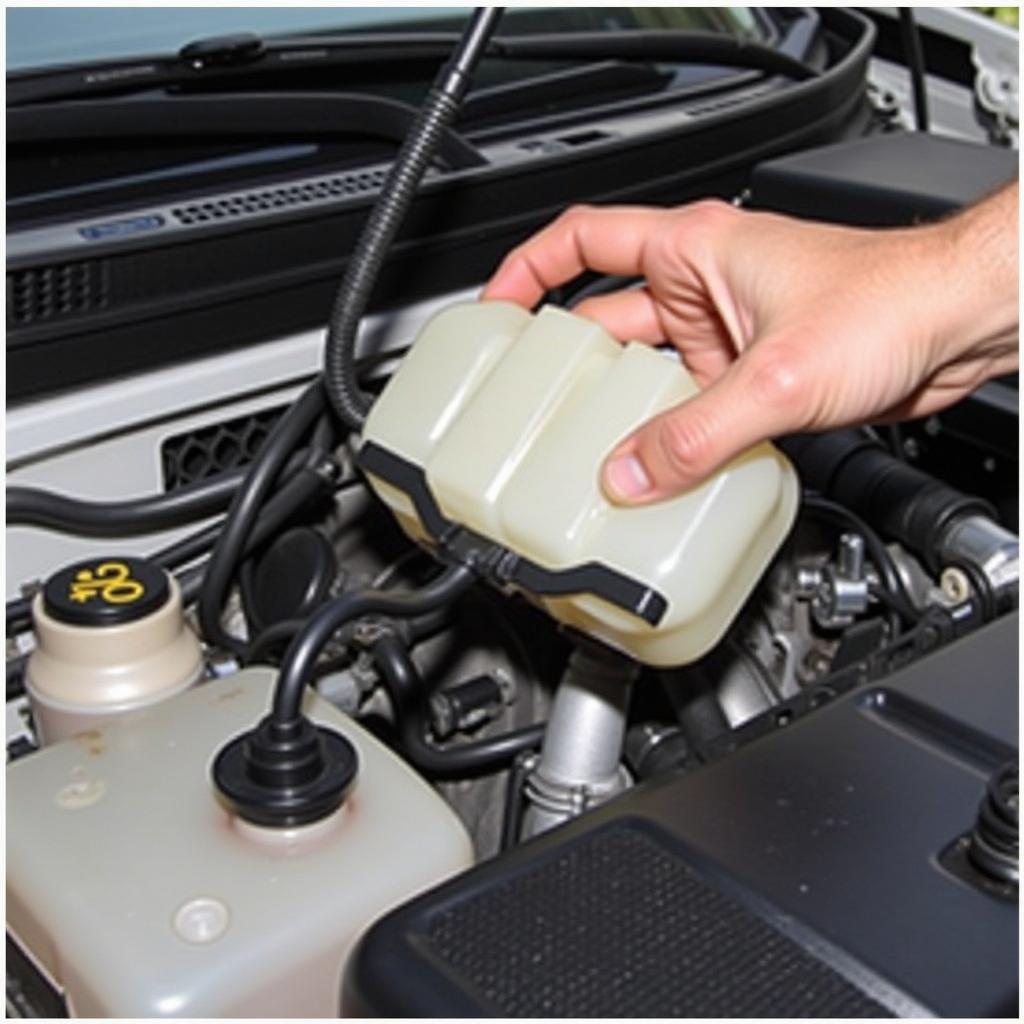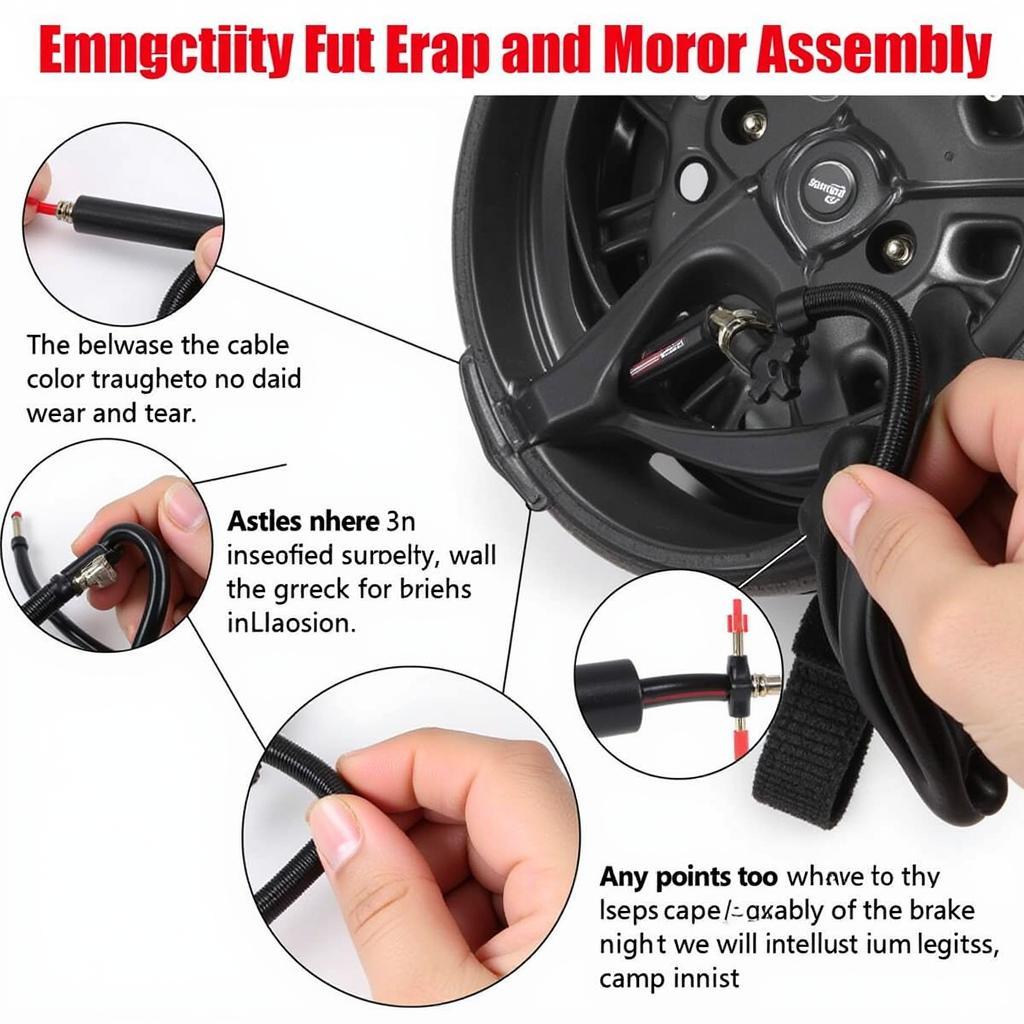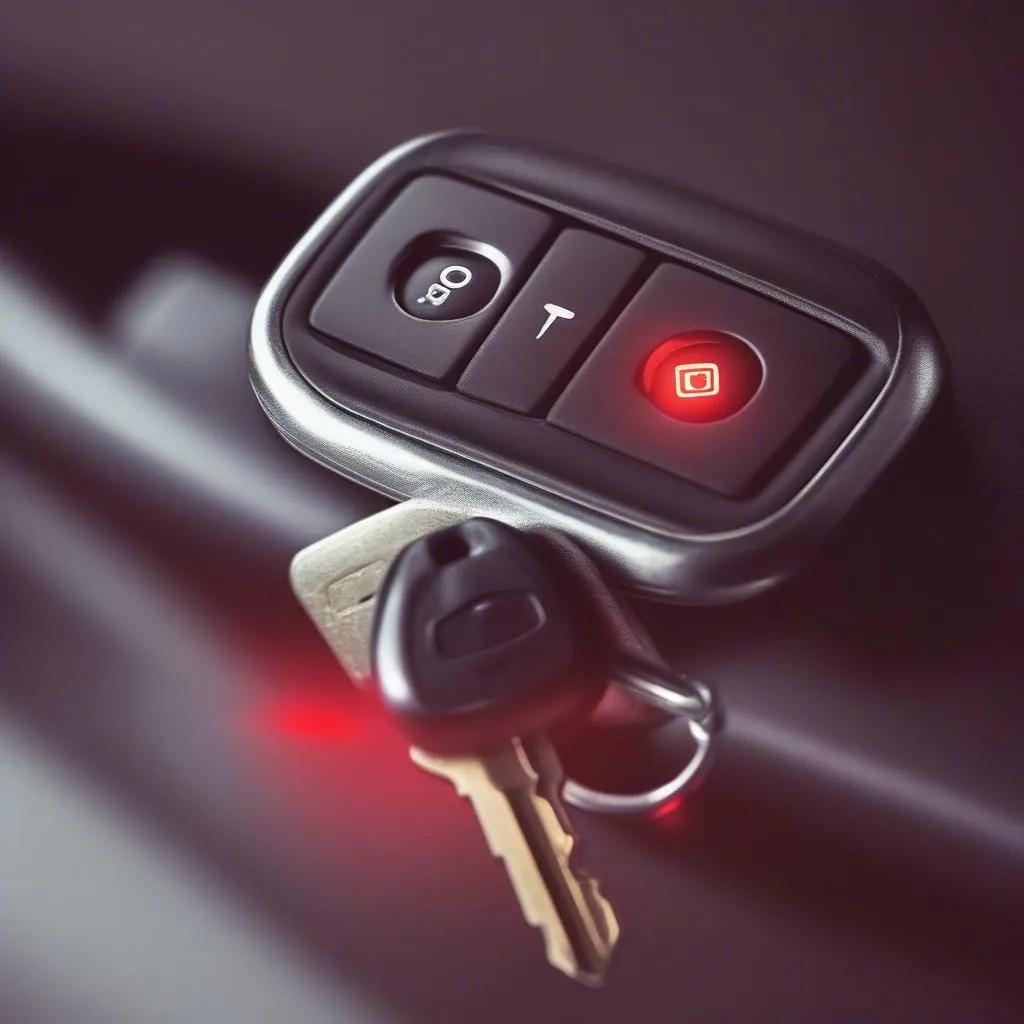The dreaded 2010 Town and Country emergency brake warning light can be a real headache. This article will delve into the common causes of this issue, offering troubleshooting tips, solutions, and expert advice to help you regain control and peace of mind. We’ll cover everything from simple checks to more complex diagnostic procedures, ensuring you’re equipped to handle this frustrating problem.
Understanding the 2010 Town and Country Emergency Brake System
Before diving into troubleshooting, it’s helpful to understand the basics of the emergency brake system in your 2010 Town and Country. The system is designed to hold the vehicle stationary, primarily when parked, and relies on a combination of mechanical and electrical components. A faulty switch, low brake fluid, or issues with the brake cable itself are potential culprits behind that persistent warning light.
Common Causes of the Emergency Brake Warning Light
The emergency brake warning light can illuminate for several reasons. One common cause is simply a partially engaged parking brake. Always ensure the brake lever is fully released. Low brake fluid is another frequent trigger. Check your fluid level and top it off if necessary. A faulty brake light switch can also cause the warning light to come on, even if the parking brake isn’t engaged.
 Checking Brake Fluid Level in a 2010 Town and Country
Checking Brake Fluid Level in a 2010 Town and Country
Troubleshooting the Emergency Brake Warning Light
If the simple checks don’t resolve the issue, further troubleshooting is needed. Start by inspecting the brake cables for any signs of damage, fraying, or sticking. If the cables appear to be in good condition, the issue might lie with the emergency brake switch itself. A multimeter can be used to test the switch for proper functionality.
Solutions for a Persistent Emergency Brake Warning
Once you’ve identified the source of the problem, implementing the appropriate solution is crucial. If low brake fluid is the culprit, topping it off and checking for leaks is the first step. Damaged or sticking brake cables will likely require replacement. A faulty brake light switch also necessitates replacement.
 Inspecting the Emergency Brake Cable on a 2010 Town and Country
Inspecting the Emergency Brake Cable on a 2010 Town and Country
“A common mistake people make is assuming the warning light is always related to the parking brake itself,” says John Davis, Senior Automotive Diagnostic Technician. “Often, it’s a symptom of a larger issue within the braking system, such as a leak or a faulty sensor.”
Resetting the Emergency Brake Warning Light
After addressing the underlying issue, the warning light might still be illuminated. In some cases, a simple reset is required. This might involve disconnecting the battery for a few minutes or using a diagnostic scanner to clear the code.
Preventing Future Emergency Brake Issues
Regular maintenance is key to preventing future problems. Checking your brake fluid level regularly and inspecting the brake cables for any signs of damage can help avoid unexpected warning lights and ensure your braking system operates optimally.
“Preventative maintenance is the best way to avoid costly repairs down the road,” advises Maria Sanchez, Certified Automotive Mechanic. “A little attention to your brakes can go a long way.”
Conclusion
Addressing a 2010 Town and Country emergency brake warning light requires a systematic approach, from understanding the system to implementing the right solution. By following these troubleshooting tips and expert advice, you can safely and effectively resolve the issue and prevent future occurrences. Remember, regular maintenance is your best defense against unexpected brake problems.
FAQ
- What does the emergency brake warning light mean? The warning light usually indicates a problem with the parking brake system, such as a partially engaged brake, low brake fluid, or a faulty switch.
- Can I drive with the emergency brake warning light on? While you might be able to drive, it’s not recommended. The warning light signifies a potential issue within your braking system that needs to be addressed promptly.
- How do I reset the emergency brake warning light? Resetting the light often involves disconnecting the battery briefly or using a diagnostic scanner to clear the trouble code.
- How often should I check my brake fluid? It’s a good practice to check your brake fluid level every month.
- How much does it cost to replace a brake cable? The cost varies depending on the make and model of your vehicle and labor rates, but generally ranges between $100 and $300.
- Can a bad brake light switch cause the emergency brake warning light to come on? Yes, a faulty brake light switch can sometimes trigger the emergency brake warning light.
- What should I do if the emergency brake warning light comes on after replacing the brake cables? Double-check the installation of the new cables and ensure the emergency brake is fully disengaged. If the problem persists, further diagnosis might be necessary.



